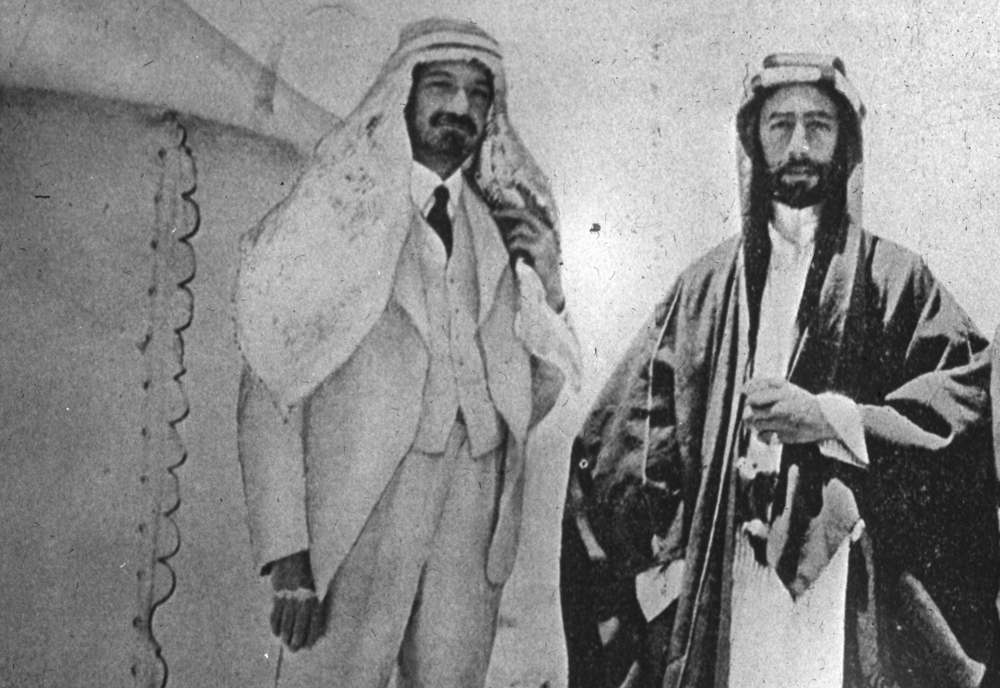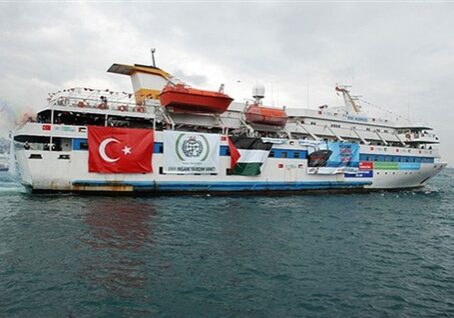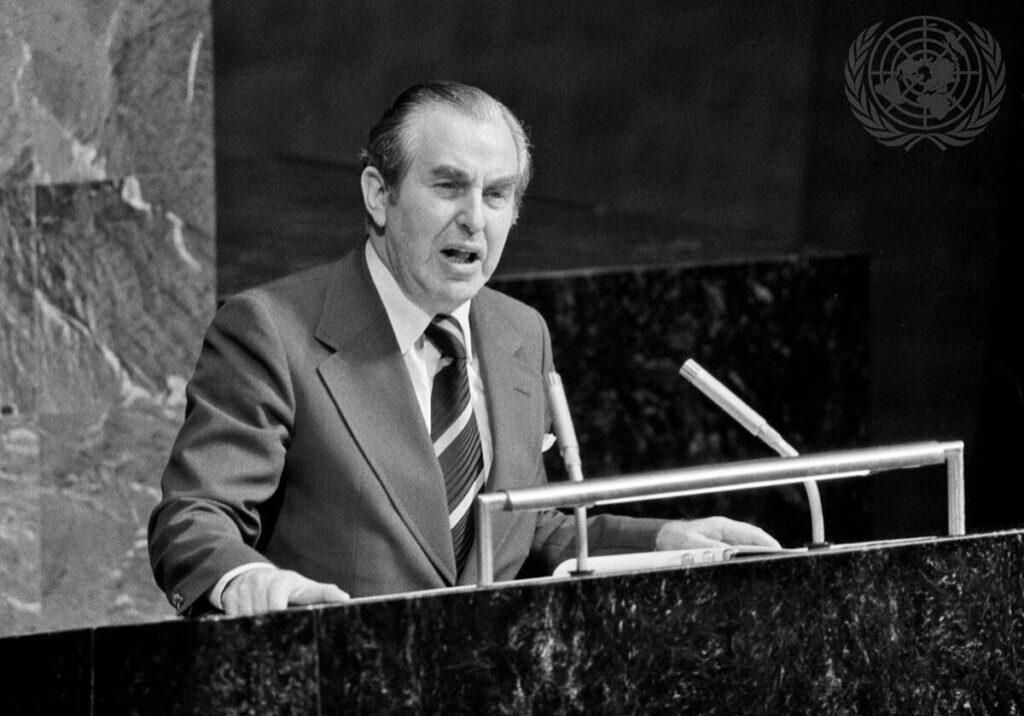Australia/Israel Review
Essay: Coexistence Lost
Nov 30, 2017 | Efraim Karsh

Efraim Karsh
When Turks and Arabs welcomed the Balfour Declaration
“100 years have passed since the notorious Balfour Declaration, by which Britain gave, without any right, authority or consent from anyone, the land of Palestine to another people. This paved the road for the Nakba of Palestinian people and their dispossession and displacement from their land.”
So Mahmoud Abbas claimed at last year’s annual meeting of the UN General Assembly in what constitutes the standard Palestinian indictment of the November 1917 British Government’s pledge to facilitate “the establishment in Palestine of a national home for the Jewish people.”
It is an emotionally gripping claim, but it is also the inverse of truth. For one thing, Britain did consult its main war allies, notably US president Woodrow Wilson, before issuing the declaration, which was quickly endorsed by the contemporary international community, including the leaders of the nascent pan-Arab movement. Furthermore, the declaration was used as a model by the Ottoman Empire for its own official communiqué.
For another thing, it was not the Balfour Declaration that paved the road to the displacement of many Palestinians but its rejection by the extremist Palestinian Arab leadership headed by the Jerusalem mufti Hajj Amin Husseini – this against the wishes of ordinary Palestinian Arabs who preferred to coexist with their Jewish neighbours and take advantage of opportunities created by the evolving Jewish national enterprise.
The Historical Context
The end of World War I saw the ideal of national self-determination becoming the organising principle of the international system as the victorious powers carved territorial states from the collapsed Ottoman, German, Habsburg, and Russian empires. This was done through a newly devised mandates system that placed the Afro-Asiatic territories of the defunct empires (the European lands were given immediate independence) under the control of respective mandatory powers, beholden to a new world organisation – the League of Nations – which were charged with steering them from tutelage to independence.
This sea change is commonly associated with Woodrow Wilson’s famous fourteen points, announced in an address to a joint session of Congress on January 8, 1918. In fact, it was the much-maligned May 1916 Anglo-French-Russian agreement on the partition of the Ottoman Empire (or the Sykes-Picot agreement as it is generally known) that blazed this new trail by providing for “an independent Arab State or a Confederation of Arab States.”
The Balfour Declaration sought to modify this agreement by substituting a Jewish national home for the international administration to which Palestine was to be subjected. While the French resented the change for fear of losing influence over Christianity’s holy sites, they eventually relented and joined their war allies in incorporating the declaration into the Turkish Peace Treaty signed at the French town of Sèvres in August 1920. Two years later, on July 24, 1922, the League of Nations appointed Britain the mandatory for Palestine with the explicit goal of “placing the country under such political, administrative, and economic conditions as will secure the establishment of the Jewish national home” as stipulated by the Balfour Declaration. A week later, the US Congress endorsed the declaration in a joint resolution.
In other words, within five years of its issuance, the Balfour Declaration had come to reflect the will of the international community as represented by a major official resolution by the newly established world organisation.
Even the Ottoman Empire, head of the world’s Muslim community, seemed to have acknowledged the right of the Jews to collective revival in their ancestral homeland. On August 12, 1918, Grand Vizier Talaat Pasha, one of the triumvirs who had run the empire since 1913, issued an official communiqué expressing “sympathies for the establishment of a religious and national Jewish center in Palestine by well-organised immigration and colonisation”, and offering to promote this enterprise “by all means” provided it “does not affect the rights of the non-Jewish population.”
Arabs Embrace the Declaration
Emir Faisal. Talaat was hardly the only regional potentate to accept the Jewish right to national revival. The leaders of the nascent pan-Arab movement were perfectly amenable to endorsing the Balfour Declaration so long as this seemed to be conducive to their ambitions. And none more so than the Hashemite Emirs Faisal and Abdullah who, together with their father, the Sharif of Mecca, Hussein ibn Ali, perpetrated the “Great Arab War” against the Ottoman Empire.
They were, as it happened, generously rewarded for their endeavours in the form of vast territories several times the size of the British Isles. Yet since these spectacular gains (which comprise the current states of Iraq, Jordan, and parts of Saudi Arabia) only served to whet their appetite, the Emirs continued to pursue their imperial ambitions under the pan-Arab guise.
Even during the revolt, Faisal began toying with the idea of establishing his own Syrian empire, independent of his father’s prospective regional empire. In late 1917 and early 1918, he went so far as to negotiate this option with key members of the Ottoman leadership behind the backs of his father and his British allies.
On June 4, 1918, Faisal met Chaim Weizmann, the Russia-born, Manchester-based rising head of the Zionist movement. The two struck up an immediate rapport, and the Emir readily acknowledged “the necessity for cooperation between Jews and Arabs” and “the possibility of Jewish claims to territory in Palestine.” Yet he refused to discuss Palestine’s future until such a time “when Arab affairs were more consolidated.”
When they met again six months later, Faisal was prepared to take his general affinity a major step further. By now, he had established a foothold in Syria under the protective wing of Sir Edmund Allenby, commander of the Egyptian Expeditionary Force, which had driven the Ottoman forces from the Levant. The Emir hoped to expand this opening into a full-fledged empire with US backing and support. Were the Zionists to help swing American public opinion behind his cause, he was “quite sure that he and his followers would be able to explain to the Arabs that the advent of the Jews into Palestine was for the good of the country, and that the legitimate interests of the Arab peasants would in no way be interfered with.”
“It [i]s curious there should be friction between Jews and Arabs in Palestine,” Faisal told Weizmann after hearing his exposition of Zionist aims. “There was no friction in any other country where Jews lived together with Arabs. He was convinced that the trouble was promoted by intrigues.” Faisal reiterated this benevolent observation at a dinner held on his behalf by Lord Rothschild, to whom Balfour sent the letter containing his famous declaration. “No true Arab can be suspicious or afraid of Jewish nationalism,” Faisal stated, “and what better intermediary could we find anywhere in the world more suitable than you? For you have all the knowledge of Europe, and are our cousins by blood.”
On January 3, 1919, shortly before giving evidence to the Paris peace conference, Faisal signed an agreement with Weizmann supporting the creation of a Jewish national home in Palestine in accordance with the Balfour Declaration and pledging the adoption of all necessary measures “to encourage and stimulate immigration of Jews into Palestine on a large scale.”
For several months, the Emir seemed to be working to this end. So much so that in April 1919, Weizmann maintained that “between the Arab leaders, as represented by Faisal, and ourselves, there is complete understanding, and therefore complete accord.”
This upbeat prognosis failed to consider the instrumental nature of Faisal’s behaviour. When his efforts to gain international recognition for his imperial dream came to naught, the Emir quickly changed tack and reneged on his historic agreement with the Zionist movement. On March 8, 1920, he was crowned by his supporters as King Faisal I of Syria “within its natural boundaries, including Palestine,” and the newly installed monarch had no intention of allowing the Jewish national movement to wrest away any part of his kingdom. The coronation was thus followed by riots in Palestine as rumours spread regarding the country’s imminent annexation to Syria. These culminated in early April 1920 in a pogrom in Jerusalem in which five Jews were murdered and more than 200 were wounded. “[I]n spite of his momentary success, obtained also partly by British gold – [Faisal] is in the long run a broken reed,” a disillusioned Weizmann wrote his colleagues.
Emir Abdullah. This disillusionment did not prevent the Zionist leaders from pinning their hopes on Abdullah, who resented his marginalisation by his younger brother and resolved to win his own “Greater Syrian” empire. Like Faisal, the Emir viewed Zionism as an influential and affluent movement that could help both rally great-power support behind his imperial dream and bankroll its implementation. In the words of his protégé and Transjordan’s Prime Minister, Samir Rifai: “The enlarged Transjordan State with the support of Jewish economy would become the most influential State in the Arab Middle East.”
Abdullah made his first overture to the Zionist movement in the autumn of 1921, indicating his readiness to recognise the Balfour Declaration and to allow Jewish settlement in Transjordan, which he had come to rule several months earlier, provided the Jews agreed to be incorporated into a unified kingdom under his headship. In November 1922, he travelled to London, where at a secret meeting with Weizmann and a number of Zionist officials, he reiterated his proposal and asked that they use their good offices with the French Government, which by then had expelled Faisal from Damascus, to secure him the Syrian throne.
Egypt. Neither were the Hashemites the Zionists’ only conduit to the Arabic-speaking world. With contacts with some of the secret, pan-Arab societies operating in the Ottoman Empire already established by the Zionist movement prior to World War I, a few months after the issuance of the Balfour Declaration, Weizmann led a Zionist commission to the Middle East to explore ways and means for its implementation, including “the establishment of good relations with the Arabs and other non-Jewish communities in Palestine.” In Cairo, he managed to convince a number of leading Syrian and Palestinian activists, living at the time in the Egyptian capital, that “Zionism has come to stay, that it is far more moderate in its aims than they had anticipated, and that by meeting it in a conciliatory spirit, they are likely to reap substantial benefits in the future.” He also succeeded in allaying the fears of the Egyptian sultan Fuad of Zionism’s alleged designs on Islam’s holy places, especially its supposed intention to destroy the Dome of the Rock and to reestablish the Jewish temple on its ruins.
It was indeed in Egypt that the Jewish national aspirations seemed to garner some genuine sympathy, albeit for the opposite reasons of those articulated by Zionist champions of the “pan-Arab connection.” Given its physical detachment from the eastern part of the Arabic-speaking world on the one hand, and its illustrious imperial past dating back to pharaonic times on the other, Egypt was seen by early pan-Arabists as “not belonging to the Arab race.” For their part, Egyptians looked down on the rest of the Arabs, using the term “Arab” in a derogatory fashion to denote a shiftless and uncultured nomad, someone to be viewed with contempt by a people with a millenarian tradition of settled cultivation.
During the 1920s and the early 1930s, Egypt was conspicuously indifferent to the anti-Zionist struggle in Palestine led by Hajj Amin Husseini.
Ziwar Pasha, the Governor of Alexandria, participated in the celebrations of the local Jewish community upon the issuance of the Balfour Declaration. Eight years later, as Egypt’s prime minister, Ziwar sent an official representative to the inauguration of the Hebrew University in Jerusalem, which he applauded as a contribution to mankind. By contrast, the Egyptian Government refused to send a delegation to the ceremonies celebrating the restoration of the al-Aqsa mosque, contenting itself with the attendance of its Jerusalem consul. Likewise, no Egyptian official bothered to meet Husseini during his visits to Cairo in 1926-28; on one occasion, he was directly snubbed by the Egyptian prime minister, who would not see him despite staying in the same hotel – this at a time when Weizmann had already conferred with Fuad in 1918, and other Zionist officials met Egyptian counterparts as a matter of course. As late as 1928, the king could still hold discussions on the merits of Zionism with the Chief Rabbi of the Egyptian Jewish community.
It was only in the mid-1930s that these sentiments began to change due to the growing pan-Arab sentiments among educated Egyptians and now-King Faruq’s (1937-52) ambition to establish himself as the leader of all Arabs.
Arab-Jewish Coexistence in Palestine
The Egyptian attitudes to the Balfour Declaration, ranging from indifference to endorsement, were largely mirrored in Palestine. Up to its conquest by the British, the country did not exist as a unified geographical or political entity but was divided between the Ottoman province of Beirut in the north and the district of Jerusalem in the south. Its local inhabitants, like the rest of the Arabic-speaking communities throughout the empire, had not experienced the processes of secularisation and modernisation that preceded the development of European nationalism in the late 1700s.
Hence, they considered themselves Ottoman subjects rather than members of a wider Arab nation, let alone a Palestinian one. Their immediate loyalties were parochial – to one’s clan, tribe, village, town, or religious sect – which coexisted alongside their overarching submission to the Ottoman sultan-caliph in his capacity as the religious and temporal head of the world Muslim community. As late as June 1918, less than three months before the end of hostilities in the Middle East, Gilbert Clayton, chief political officer of the Egyptian Expeditionary Force, noted the absence of “real patriotism amongst the population of Palestine.”
Two months later, a British report stated that “the Muslim population of Judea took little or no interest in the Arab national movement. Even now, the Effendi class, and particularly the educated Muslim-Levantine population of Jaffa, evince a feeling somewhat akin to hostility toward the Arab movement very similar to the feeling so prevalent in Cairo and Alexandria.”
Against this backdrop, it was hardly surprising that it took one full year for the first manifestation of local opposition to the Balfour Declaration to emerge in the form of a petition by a group of Palestinian Arab dignitaries and nationalists. Yet rather than protest the declaration’s encroachment on Palestinian Arab national rights, the petition demanded the incorporation of Palestine into Syria – a demand repeated by the Palestinian Arab leadership throughout the 1920s, 30s, and 40s.
For years after the declaration’s issuance, many Palestinian Arabs remained ignorant of its actual substance, with the name Balfour instead denoting an idea – power, money to promote Jewish settlement, or, more so, an opportunity for self-enrichment. In the words of a sheikh in the vicinity of Gaza: “Tell Balfour, that we in the South are willing to sell him land at a much lower rate than he will have to pay in the North.”
The sheikh knew what he was talking about.
Palestine’s Arab population rose from about 600,000 to some 950,000 owing to the substantial improvement in socioeconomic conditions attending the development of the Jewish National Home. Small wonder that the vast majority of Palestinian Arabs sought to take advantage of the unprecedented opportunities afforded by the growing Jewish presence in the country, which raised their quality of life and standard of living well above those in the neighbouring Arab states. In the words of a 1937 report by a British commission of enquiry headed by Lord Peel:
The general beneficent effect of Jewish immigration on Arab welfare is illustrated by the fact that the increase in the Arab population is most marked in urban areas affected by Jewish development. A comparison of the Census returns in 1922 and 1931 shows that, six years ago, the increase percent in Haifa was 86, in Jaffa 62, in Jerusalem 37, while in purely Arab towns such as Nablus and Hebron it was only 7, and at Gaza there was a decrease of 2 percent.
As a result of this state of affairs, throughout the mandate era (1920-1948), the periods of peaceful coexistence were far longer than those of violent eruption, and the latter were the work of a small fraction of Palestinian Arabs.
In the 1920s and 1930s, Jewish representatives held hundreds of formal meetings with their Arab counterparts in Palestine and the neighbouring Arab states and were frequently invited to social gatherings and official events as well as to the homes of prominent Arab families. Joint Arab-Jewish projects and enterprises sprang throughout the country – from the association for orange growers in Jaffa, to mixed committees for the building of the Haifa port; from active Jewish-Arab cooperation in anti-malarial drainage and the improvement of water supplies, to a joint organisation for the benefit of the poor and the aged, to Arab-Jewish professional unions. In 1923, about a hundred Arab children attended private Jewish schools,while 307 Jewish children attended private Arab schools. Three years later, the number of Jews attending Arab schools grew by some 50% to 445.
Even Gilbert Clayton, a prominent champion of the pan-Arab cause who in 1923 became Palestine’s chief political secretary, acknowledged that “on non-political matters, such as taxation, agriculture, etc., the Jewish colonies and Arab villages speak the same voice and sometimes from the same hall.”
Even the most protracted period of Palestinian Arab violence in 1936-39, with its paralytic atmosphere of terror and a ruthlessly enforced economic boycott, failed to dent Arab-Jewish coexistence on many practical levels, including defence cooperation. Contrary to its common depiction as a nationalist revolt against the ruling British and the growing Jewish presence in the country, this was a massive exercise in violence that saw far more Arabs than Jews murdered by Arab gangs, which repressed and abused the general Arab population. And while thousands of Arabs fled the country in a foretaste of the 1947-48 exodus, others preferred to fight back against their oppressors, often in collaboration with the British authorities and the Hagana, the largest Jewish underground defence organisation. Still others sought shelter in Jewish neighbourhoods.
This coexistence persisted into the World War II years. While Hajj Amin Husseini, who had fled Palestine in 1937, was busy making himself “the most important Arab Quisling in German hands” (to use the words of a contemporary British report) – broadcasting Nazi propaganda to Arabs and Muslims worldwide, recruiting Arab prisoners of war and Balkan Muslims for the Nazi fighting and murder machine, and urging the extermination of Jews wherever they could be found – ordinary Palestinian Arabs sought to return to normalcy and re-establish coexistence with their Jewish neighbours.
Arab and Jewish citrus growers joined forces in demanding the cancellation of customs duty and the extension of government loans to cultivators for the duration of the war. Large quantities of Arab agricultural produce reappeared in Jewish markets, and this phenomenon expanded in subsequent years as both communities enjoyed the unprecedented spending and investment boom attending Palestine’s incorporation into the British war effort. Land sales continued as far as possible with Arabs often acting as intermediaries for Jewish purchases in the zones that had been prohibited and restricted by the British authorities in 1939. Thousands of Jews made the traditional pilgrimage to Rachel’s Tomb, near Bethlehem, while Jewish students visited this exclusively Arab town for the Christmas celebrations.
Even the German Foreign Office grudgingly conceded, at the end of 1940, that “conditions [in Palestine] are entirely peaceful. Jewish-Arab conflict is no longer apparent.”
Mahmoud Abbas’ rejection of the Jewish right to national self-determination, which was acknowledged 100 years ago by the international community, including the world’s foremost Muslim power, leaders of the pan-Arab movement, and ordinary Palestinian Arabs, affords a sad testament to the unchanging nature of the Palestinian leadership’s recalcitrance.
It was Hajj Amin Husseini’s predication of Palestinian national identity on hatred of the “other” rather than on a distinct shared legacy that “paved the road for the Nakba of Palestinian people and their dispossession and displacement from their land.” And it was Yasser Arafat and Mahmoud Abbas’ persistence in this zero-sum approach which ensured the perpetuation of Palestinian dispersal and statelessness to date.
It is only by shedding their century-long revanchist dreams and opting for peace and reconciliation with their Israeli neighbours that Palestinian leaders can end their people’s suffering. And what can be a better starting point for this sea-change than endorsement of the Balfour Declaration, rather than its atavistic denigration?
Dr. Efraim Karsh, Editor of the Middle East Quarterly, is emeritus professor of Middle East and Mediterranean studies at King’s College London and professor of political studies at Bar-Ilan University, where he also directs the Begin-Sadat Center for Strategic Studies. © Middle East Quarterly (www.meforum.org/meq), reprinted by permission, all rights reserved.
Tags: Israel






